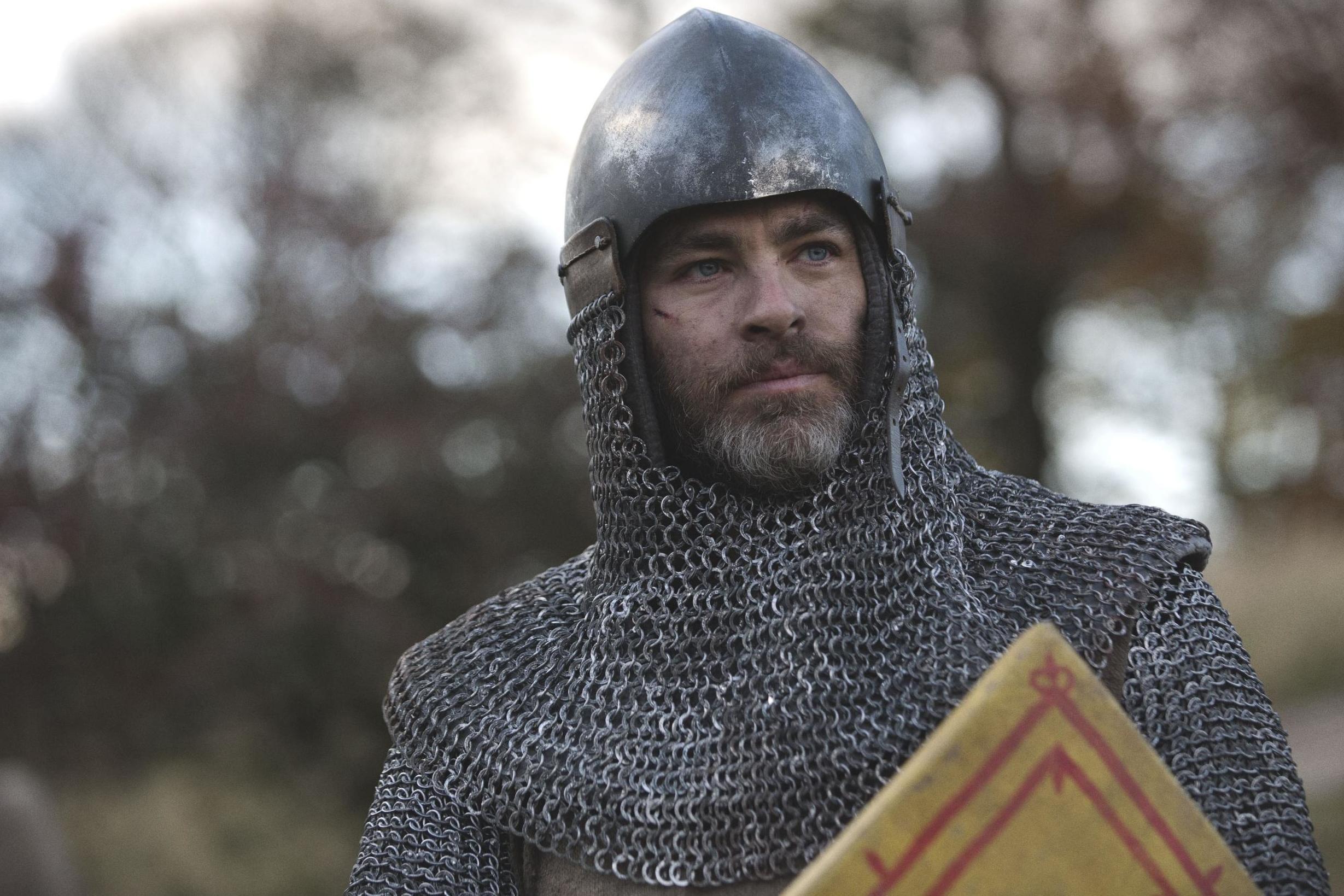The fuss over Chris Pine's 'dazzling' penis tells us so much about the enduring taboo of on-screen male nudity
Mostly reserved as an object of power or ridicule, cinema's reluctant and patriarchal approach to the penis highlights that male nudity remains a loaded subject in film


This week saw the hype surrounding Chris Pine getting his kilt off in the forthcoming Outlaw King reach dizzying proportions. Rave reviews for Pine's "dazzling" appendage, as he stepped into the shoes of Robert the Bruce, appeared in Vulture and Vanity Fair.
Yet there's something a touch prurient and adolescent in keeping this sort of breathless watch for male nudity. If the male full frontal weren’t still such a powerful taboo, perhaps this wouldn't be the case?
The question of why this remains such a tricky topic points to how patriarchal film is, but also the ubiquity of the male gaze. At the heart of an understanding of male nudity is the question of looking at men and therefore making them the object of a work of art, which is still seen as revolutionary or even deplorable.
The scarcity of film dong certainly attests to this - and the ways in which these have been presented show what a sensitive and loaded subject male nudity is. Michael Fassbender famously gets naked in Shame, but this comes in a film that is relentlessly stigmatising and sex-negative, depicting somebody whose attitude to sex comes totally at the expense of his own life and stability. In Forgetting Sarah Marshall, another famous exemplar of the form, the male body is an object of pity and derision, played for ripe comedy.
This aligns with a fairly common view in which the male body - the flaccid penis - is perceived as funny. In his review of Magic Mike, the Guardian’s Peter Bradshaw compared the movie’s self-seriousness and sexiness unfavourably with the jollity on display in The Full Monty, writing that in the latter film “male nakedness is itself comic; paunch and flab and wobble are funny... and revealing your penis is the ultimate punchline”. In Alexander Payne’s Sideways, a fat naked man running after the protagonists is played as an enormous comic set-piece.
If the penis is perceived as shameful or funny instead of attractive, it’s surely because of an absurd idealisation of male virility, which figures the erect penis as magnificent and powerful. In this logic it follows that the at-rest member must be risible, since it connotes powerlessness and vulnerability, which must never be associated with men.

But this doesn’t fully explain the coyness of the camera when it comes to dicks. In a recent article Guy Lodge wrote about the shameful shirking of nudity in Call Me By Your Name, which goes a step further with its laugh-out-loud camera pan onto a tree just when the leads are about to get jiggy.
The dominance of the male gaze is almost wholly to blame for this idiocy, which goes as far as infecting film sex scenes. It’s notable that, among the thousands of sex scenes on film, so few depict men receiving sexual pleasure or in the process of orgasm. The camera is consistently trained, as a rule, on the face of women in straight sex scenes, which vehicles implicitly that the man is virile and capable for his ability to make a woman come. The obverse of this reasoning is that portraying a man receiving orgasm would show him to be passive.
One of the most famous male movie orgasms - Kevin Kline in A Fish Called Wanda - is played as straight-up farce. In Basic Instinct, Michael Douglas is shown in the throes, but only because he is being dominated by a psycho. A couple of recent films notably break with this trend: 120 BPM’s justly celebrated hand job scene depicts male orgasm as exciting and sexy, leading to moments of shared sweetness and intimacy. The scene carries on beyond the orgasm to depict the couple smiling and talking together - a pattern that recurs in Carlos Marques-Marcet’s 10,000 KM, which, on top of its audacity in depicting a couple communicating with each other, has the boldness to show a woman on top.
By contrast, so few sex scenes in film portray even rudimentary foreplay that it is still remarkable to see the hardly niche act of cunnilingus on film. Luca Guadagnino’s A Bigger Splash is a notable recent exception to the rule; the act also comes up in Jane Campion’s Top of the Lake - these works, by a gay man and straight woman, both function as an implicit rebuttal to the straight male gaze. In Stranger by the Lake, by Alain Guiradie, and Francis Lee’s God’s Own Country (both of which star gay men), the penis features in a way that isn’t shameful but is run of the mill, or - you may want to sit down for this - beautiful.
It remains an absurd situation that we can still be so hung up on male full-frontal nudity, but it’s important to see how this dearth fits into the pattern of male dominance that we know exists in film, which the industry is at pains to show itself tackling. Part of the consequence of detoxifying the movies, by letting a diversity of voices tell new stories in new ways, will be to bring about an equal representation of men as sexual objects. Bring on the revolution.
Join our commenting forum
Join thought-provoking conversations, follow other Independent readers and see their replies
Comments